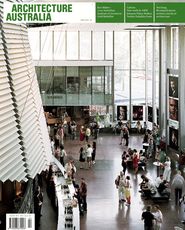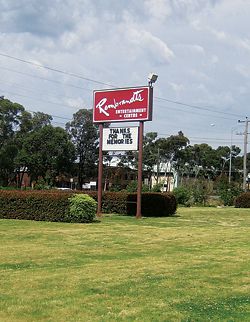
1

2
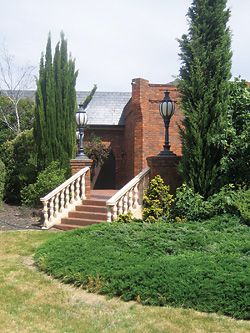
3 N°1–3 Lawns, hedges and mature trees separate Rembrandt’s Entertainment Centre from the Burwood Highway, heightening the approach to this “80s suburban dream”. Sean Loughery’s Eight Crosses, Eight Windows (Possible Things Project 2) is seen in the windows.
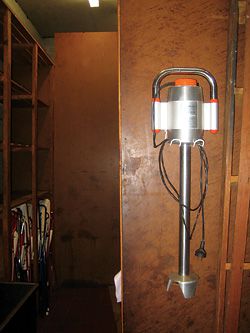
4 “Is that an installation piece or a big Bamix?” Photograph Rexroth Mannasmann Collective.
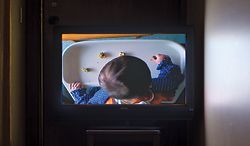
5 Vin Ryan’s video installation, Debut: Recordings From Yesterday and the Day Before.

6 The dresses in Jillian Allan’s Deities Three: Ascendency, Now Presenting …, and Grounded recall debutante balls at Rembrandt’s.

7 Antarctica’s Diamond Drape in the main kitchen.

8 Workshop Architecture’s Golden Memories in the empty dining room, amongst tables set for dinner.

9 Cake by Sally Mannall.
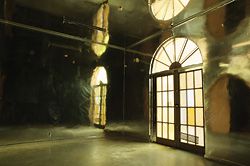
10 The reflective room of Sanne Mestrom’s Standing in the Shadow of the Shaman.
Suburban memories. The Rexroth Mannasmann Collective reflects on a series of installations at the now-defunct Rembrandt’s Entertainment Centre, curated by Simon Whibley and Anthony McInnery.
Towards the end of November, Rembrandt’s Entertainment Centre briefly reopened its doors to the public. Instead of a floor show, an affordable buffet meal or a debutante’s ball, the drawcard was a newly abandoned restaurant concealing art installations. On display were site-specific installations created by nine Melbourne artists and architectural firms in response to questions of community, civic centre and the place Rembrandt’s held in the cultural memory of Melbourne’s eastern suburbs. The exhibition was part of an ongoing RMIT research project investigating suburban development in the City of Knox.
As a suburban space Rembrandt’s is part counterpoint and part precursor to the Knox City shopping centre diagonally across Burwood Highway. The most remarkable contrast is to the large lawns with mature trees and hedges established around the building. These grounds heighten the movement from car through gardens into the internalized space of the restaurant (nearly all windows are obscure glass or heavily curtained), making the tumbled brick French chateau facades, terraces and grand stairs a drawn out experience of a 1980s suburban dream.
Both shopping and dining experiences are dislocated from their surroundings, so the expanse of planting engulfing the entertainment centre is unexpected and surprising. While an exploration of spatial dislocation and kitsch architecture is enticing to those interested in suburbia, it is the size and prominent location of Rembrandt’s land package that makes it an interesting question in the urban development of the area.
When Rembrandt’s finally ceased operations in late 2007, the interior became a time capsule of the dining experience of another decade. The table settings were still in place, the stage curtains were ready to pull back at a moment’s notice and the kitchen was cleaned and ready for a chef. The experience of re-entering these spaces is, in part, that of a visit to Anne Frank’s house or a wander through the streets of Sovereign Hill. The “period” details are all in place and, in this exhibition, a projected human prop appears in uniform, caught in his never ending cycle of table service.
Having a large venue at their disposal, the curators dispersed the artworks in a manner that encouraged exploration of the whole venue. From the tables still set for dinner to the operational kitchen, the question of “Is this an installation piece or a big Bamix?” turned the experience into a treasure hunt. In the half-stocked bar, we wondered whether and how the feeling of just-abandoned life added to the exhibition. It certainly encouraged a thorough exploration of the service areas and was one of the successes in the staging of the show.
The hide-and-seek curation and the unnerving, inhabited-by-ghosts museum experience was exploited by Vin Ryan in the Debut: Recordings From Yesterday and the Day Before video installation. Located upstairs, behind the function room kitchen, down an ever-narrowing corridor in a dark, airless space above the stage lighting rig, the soundscape of a child gurgling was eerie and disturbing. It was difficult to pre-empt what was happening to the child in these back-of-house spaces. For a few moments one wondered about the darker side of Rembrandt’s and the family dining experience. Mundanely, the footage was of an everyday meal eaten by an infant in a high chair at home.
On the whole, most works seemed to respond to space rather than the memory of previous functions held within the walls. Of those that did, Sally Mannall’s cake and video projection offered a symbolic farewell gift and touched on the loss of a dining audience, with a waiter dismantling table settings. Jillian Allan’s dresses offered a memorial to the rites of passage undertaken by many young women at debutante balls. That these were “mayoral” events seems fitting given the aim of the exhibition to question community and civic space.
Sanne Mestrom created a reflective room and covered every mirror in Rembrandt’s with newspaper. The simplicity of covering the walls and ceiling in foil produced a rich and luxurious experience, perhaps commenting on the former grandeur and glamour of Rembrandt’s. The installation made a fantastic antechamber to the liquor store, with the amber glow calling across the dark architectural garb of the front of house. The effect of this carnival house of mirrors was as if Willy Wonka had stolen the reflections from all Rembrandt’s mirrors and collected them in one glowing space.
Antarctica’s Diamond Drape borrowed the pattern from a table in the upstairs dining room, performed mathematical equations upon it, then built an oddly proportioned MDF plane on legs in the main kitchen. The relationship to the viewer was especially disconcerting, with the plane installed just below eye level, encouraging one to crawl between the rickety steel legs to fully explore the kitchen. The still-functioning appliances were landlocked, the remnant grease and kitchen smell brought closer by forcing visitors into a claustrophobic space. The discovery of an unlocked fire door gave us an escape to the loading bay, the door opening into the art and sending a ripple through the plane, with a jangling of steel legs.
In truth, we probably never would have gone for a meal at Rembrandt’s, yet the prospect of gawking at the built corpse in suburbia aroused an indecent curiosity. There was a sadness at the fact that no-one wants to be entertained there any longer. Maybe it was the tables all set for dinner, or the hushed dark interior, but it felt like being at the funeral of someone only half known and wanting to hear the gossip of their life …
The Rexroth Mannasmann Collective is a Melbourne-based architectural practice.
REMBRANDT’S: 9 INSTALLATIONS
22–30 November, 2008
Curators
Anthony McInnery and Simon Whibley.
Installations
Antarctica, Jillian Allan, Greg Creek, Herbert + Mason, Sean Loughery, Sally Mannall, Sanne Mestrom, Vin Ryan, Workshop Architecture.
Joint project partners
RMIT University Design Research Institute; Urban Liveability; Knox City Council, City Development and Cultural Services; Victorian State Government, Department of Planning and Community Development; the owners of Rembrandt’s Entertainment Centre.
Photography
1, 3, 4 The Rexroth Mannasmann Collective.
2, 5–10 Nobuo Omichi.

